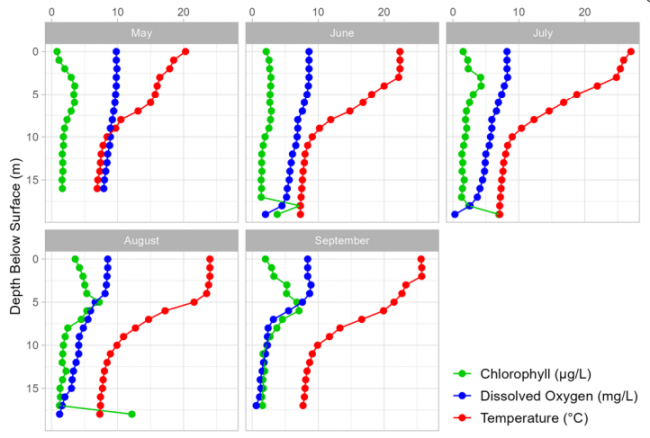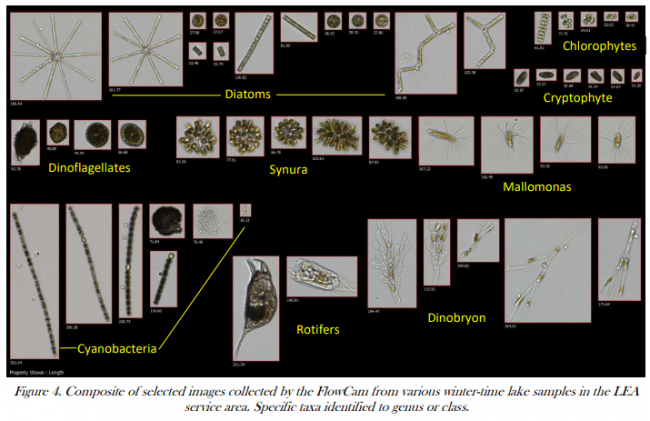
May – LEA’s water testing team collected the first fluorometer profile in late May. At that time, Hancock Pond was weakly stratified. In the upper waters, fluorescence values increased until reaching mild peaks at 4 meters and 6 meters. This fluorescence increase occurred just above the thermocline, where rapidly changing water density provided algae a place to “sit”. In the middle waters, fluorescence gradually decreased and in the deep waters, it remained low and uniform.
June – Although there were slightly more algae in the upper waters, fluorescence values remained fairly uniform and low. Increased fluorescence values near the bottom are likely caused by interference from bottom sediments.
July -. Warm surface waters provided algae favorable growing conditions, noted by the elevated fluorescence readings in the upper waters. Fluorescence values increased until reaching their peak at 3 meters and 4 meters. This is likely where the colder, denser water provided algae a place to “sit”. In the middle and deep waters fluorescence values remained fairly uniform until the bottom, where increased fluorescence values are likely caused by interference from bottom sediments.
August – Warm surface waters continued to provide algae favorable growing conditions, noted by the elevated fluorescence values throughout the upper waters. Fluorescence values were highest at 5 meters. In the middle waters, fluorescence values decreased. A slight fluorescence increase was noted at 13 meters but fluorescence remained fairly uniform and low until the bottom where increased fluorescence values are likely caused by
interference from bottom sediments.
September – A late season warm spell, provided algae favorable growing conditions, noted by the elevated fluorescence values in the upper waters. Fluorescence values were highest just above the thermocline at 6 meters, likely sitting on a “shelf” created by the denser, lower temperature waters. Below this peak, fluorescence values quickly decreased and then remained fairly uniform throughout the deep waters.
Synopsis: Algae concentrations were low throughout the water column in May, June, and July. Moderate readings were seen at around 5 meters in August and September. High readings in the bottom waters were likely caused by sediment interference.
Gloeotrichia echinulata (a type of cyanobacteria (blue-green algae) commonly found in low-nutrient waters) can be seen with the naked eye. Gloeo density is reported as a value ranging from 0 – 6, based on the number of Gloeo colonies seen through a Secchi scope. Higher values indicate more Gloeo colonies. On the density chart below, Hancock Pond remained at a density of 0 all summer. Gloeotrichia echenulata colonies were not observed in Hancock Pond in 2023.

